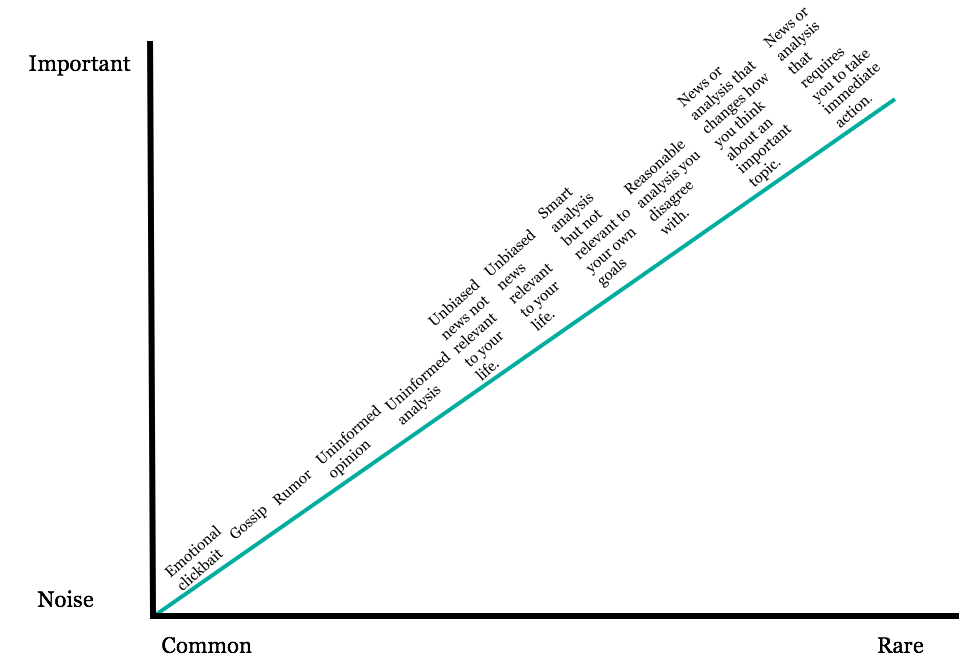

It’s the same tweet but can you spot the difference between the two images?
Of course, you should, The most obvious is the featured image and then the title.
For many years, I’ve seen rebukes like this, a reminder of what is wrong with media space — misleading titles. However, I’ve come to realize it would take more than complaints like this to change anything.
How the Attention Economy works
Catchy title → Visits → Impressions or Clicks → Advertising Revenue
It’s simple, the more attention-grabbing the title is, the more views the media content gets, this, in turn, increases the bargaining power/income earned by the media house. This is how media houses work and it seems to be working fine, however, it’s also the root cause of the click-baits — misleading titles.
A publicistic composition doesn’t have a particular construction. You merely need to pass a straightforward process for authority, click buy study documents, fill an effortless purchase type and that’s it! We are aware that academic writing has not been an effortless by easy essay typer. In the event the student requires a particular format, like APA or MLA, it is extremely important to note that within the purchase form.
This level truly needs to be controversial, and yes it needs to function as the author’s placement on a specific issue. Pro operating in your sequence is continually accessible to provide you with an extensive reply on your own purchase. Consequently, look at starting the moment you could. It is possible to readily purchase documents help by completing the form within the leading portion of the site
The problem of misleading titles and unhelpful content starts with the business model. That how mainstream media works and things can’t change significantly until the business model changes.
How would this change? It’s not far fetched as the solution is already at hand…
The future of Media Consumption
People would be loyal to media sites, and they’d pay for access to information. That’s the future I see. It’s already being done for music, videos, and written content is definitely tagging along.
Humans are tribal by nature, we like to belong, to be part of groups. That’s the way we are; even if you say you’re not like that, not wanting to belong in itself is choosing to belong with those who choose to not belong ( you see that we can’t escape groups).
For different reasons, we’re loyal to certain brands — media houses.
For example, For Nigerian News I’m more drawn to Channels TV news for Political news than TVC or any other station, for business content Naira metrics, for Tech, It’s Tech point hands down — used to be TechCabal but I don’t know what happened to them.
I already have an affinity to these brands and I appreciate what they do. Which brands are you more drawn to?
A Case for Paywalls
In why the Athletic has a paywall, its founder best explains why it chose to and how media companies are fighting to stay alive.
What I learned along the way is there is a big disconnect between what the public believes is happening in media and what is actually happening.
Journalists are not losing their jobs because they are bad at what they do. The №1 killer of newspapers and websites — and radio and television appear to be next — is ad rates, in print and online. As Facebook and Google corner the ad market, and companies increasingly turn to social avenues to promote themselves, ad rates are dropping, often at exceptional rates.
In the (recent) past, you could attempt to make money online by going for scale — a high number of clicks — but that is becoming increasingly difficult. Even a very high-end website, like the New York Times, has online ad rates of about $8 CPM (cost per thousand impressions). Most newspapers and websites are much lower than that — and the number is falling every year.
Even very well-read stories for large outlets may only generate $75 or $100 in revenue online. Not enough to pay a writer for a day’s work, let alone add in an editor, or any other costs associated with a large company producing content.
That, on a basic level, is why newspapers like the New York Times, The Washington Post, and The Globe and Mail are pursuing a subscription model. They have to in order to produce the content that makes those brands what they are. They have done the math that shows getting even two or three subscribers for a story is worth more than 20,000 hits.
This current model powered by Ad money just isn’t sustainable, hence the advent of subscriptions.
I can imagine that for many people paying for news/content feels weird. I only started paying for content this year, partly due to the increase of paywalls and also because I started questioning myself, asking if not paying $5/month was a smart move when compared to missing out on really good/helpful information. It’s money I’d easily spend on food or give out so why not invest in myself.
Now before I go too far, It’s important to note that a paywall doesn’t guarantee quality — quality in itself is a subjective term — but it does drive us closer to better content for all since there’s the security of a paying audience.
Free sounds good but it comes at a price — someone’s always paying for it.
If more people don’t pay for information, the alternative is that people with money would control information — as it’s seen in media houses who can’t broadcast certain stories because it’s related to one of their major sponsors or partners. When we have a few companies driving in most of the revenues of media companies, it’s difficult to see how these companies could also control which stories these media companies report.
For paid content, It might mean fewer views but better focus on pleasing the paying audience. At the moment, the transition to producing quality content would mostly involve using a hybrid approach — Ads & subscriptions.
To command more subscriptions revenue, media houses would need to go beyond catchy often misleading titles and move on to producing differentiated content.
Format — Writing Style. I’m currently enamoured by the writing style of Morning Brew, Skimm & Finimize. In a world where everyone seems to be sounding the same way, saying the same thing in a different tone could be a major difference.
Unique Content — The Hustle does this well, choosing to focus on different stories equally important stories not often covered by mainstream media. Zikoko’s Naira life is also a beautiful idea too.
Contextualization — While the world is looking in one direction, there are often other different valid perspectives. Stratechery by Ben Thompson does a brilliant job on this.

The future isn’t something that suddenly happens, it gradually dawns on us.
As media houses gradually slap paywalls on their sites, it’s a no-brainer that differentiation is a great way to attract the audience that has a limited budget and attention span.
As for readers, watchers, listeners. If we truly desire to ensure that the content produced is helpful and less bias, paying for content seems inevitable.


